3. Norouzkhani N, Chaghian Arani R, Mehrabi H, Bagheri Toolaroud P, Ghorbani Vajargah P, Mollaei A, et al. 2022; Effect of virtual reality-based interventions on pain during wound care in burn patients; a systematic review and meta-analysis. Arch Acad Emerg Med. 10:e84. DOI:
10.22037/aaem.v10i1.1756. PMID:
36426174. PMCID:
PMC9676699. PMID:
e1072ab378ed403eaaa9ba6b3ca3d017.
5. Hunt C, Moman R, Peterson A, Wilson R, Covington S, Mustafa R, et al. 2021; Prevalence of chronic pain after spinal cord injury: a systematic review and meta-analysis. Reg Anesth Pain Med. 46:328–36. DOI:
10.1136/rapm-2020-101960. PMID:
33408161.

6. Jensen TS, Baron R, Haanpää M, Kalso E, Loeser JD, Rice ASC, et al. 2011; A new definition of neuropathic pain. Pain. 152:2204–5. DOI:
10.1016/j.pain.2011.06.017. PMID:
21764514.

7. Scholz J, Finnerup NB, Attal N, Aziz Q, Baron R, Bennett MI, et al. Classification Committee of the Neuropathic Pain Special Interest Group (NeuPSIG). 2019; The IASP classification of chronic pain for ICD-11: chronic neuropathic pain. Pain. 160:53–9. DOI:
10.1097/j.pain.0000000000001365. PMID:
30586071. PMCID:
PMC6310153.

8. Miclescu A, Straatmann A, Gkatziani P, Butler S, Karlsten R, Gordh T. 2019; Chronic neuropathic pain after traumatic peripheral nerve injuries in the upper extremity: prevalence, demographic and surgical determinants, impact on health and on pain medication. Scand J Pain. 20:95–108. DOI:
10.1515/sjpain-2019-0111. PMID:
31536038.

9. Burke D, Fullen BM, Stokes D, Lennon O. 2017; Neuropathic pain prevalence following spinal cord injury: a systematic review and meta-analysis. Eur J Pain. 21:29–44. DOI:
10.1002/ejp.905. PMID:
27341614.

10. Finnerup NB, Johannesen IL, Sindrup SH, Bach FW, Jensen TS. 2001; Pain and dysesthesia in patients with spinal cord injury: a postal survey. Spinal Cord. 39:256–62. DOI:
10.1038/sj.sc.3101161. PMID:
11438841.

11. Deng Y, Luo L, Hu Y, Fang K, Liu J. 2016; Clinical practice guidelines for the management of neuropathic pain: a systematic review. BMC Anesthesiol. 16:12. DOI:
10.1186/s12871-015-0150-5. PMID:
26892406. PMCID:
PMC4759966.

12. Bates D, Schultheis BC, Hanes MC, Jolly SM, Chakravarthy KV, Deer TR, et al. 2019; A comprehensive algorithm for management of neuropathic pain. Pain Med. 20(Suppl 1):S2–S12. Erratum in: Pain Med 2023; 24: 219. DOI:
10.1093/pm/pnz075. PMID:
31152178. PMCID:
PMC6544553.

14. Cavalli E, Mammana S, Nicoletti F, Bramanti P, Mazzon E. 2019; The neuropathic pain: an overview of the current treatment and future therapeutic approaches. Int J Immunopathol Pharmacol. 33:2058738419838383. DOI:
10.1177/2058738419838383. PMID:
30900486. PMCID:
PMC6431761.

16. Hinton T, Johnston GAR. 2018. GABA, the major inhibitory neurotransmitter in the brain. Reference Module in Biomedical Sciences. Elsevier;DOI:
10.1016/B978-0-12-801238-3.96594-2.
17. Duncan BR. Volatile anesthetics and O2 activate TASK-1/3 by weak H-bonding with X-gate uncharged Arg-245: the major molecular mechanism for carotid body hypoxic sensitivity and further insights into fighter pilot +Gz-induced LOC. OSF Preprints [Preprint]. doi: 10.31219/osf.io/y7z6e. DOI:
10.31219/osf.io/y7z6e.

19. Li YH, Hsu DZ, Liu CT, Chandrasekaran VRM, Liu MY. 2022; The protective effect of muscimol against systemic inflammatory response in endotoxemic mice is independent of GABAergic and cholinergic receptors. Can J Physiol Pharmacol. 100:665–78. DOI:
10.1139/cjpp-2021-0682. PMID:
35856422.

20. Hollister LE. 1990; New class of hallucinogens: GABA-enhancing agents. Drug Dev Res. 21:253–6. DOI:
10.1002/ddr.430210311.

21. Wei D, Tang K, Wang Q, Estill J, Yao L, Wang X, et al. 2016; The use of GRADE approach in systematic reviews of animal studies. J Evid Based Med. 9:98–104. DOI:
10.1111/jebm.12198. PMID:
26997212.

22. Hama A, Sagen J. 2012; Combinations of intrathecal gamma-amino-butyrate receptor agonists and N-methyl-d-aspartate receptor antagonists in rats with neuropathic spinal cord injury pain. Eur J Pharmacol. 683:101–8. DOI:
10.1016/j.ejphar.2012.03.015. PMID:
22449374. PMCID:
PMC3340500.

23. Hosseini M, Karami Z, Janzadenh A, Jameie SB, Haji Mashhadi Z, Yousefifard M, et al. 2014; The effect of intrathecal administration of muscimol on modulation of neuropathic pain symptoms resulting from spinal cord injury; an experimental study. Emerg (Tehran). 2:151–7. PMID:
26495371. PMCID:
PMC4614567. PMID:
4ee21a8dfbaa4a3c8d65e82aed0b62be.
24. Hosseini M, Karami Z, Yousefifard M, Janzadeh A, Zamani E, Nasirinezhad F. 2020; Simultaneous intrathecal injection of muscimol and endomorphin-1 alleviates neuropathic pain in rat model of spinal cord injury. Brain Behav. 10:e01576. DOI:
10.1002/brb3.1576. PMID:
32189472. PMCID:
PMC7218251. PMID:
428fb3158c4744ccbeed3359cffc6c4d.

25. Jeon YH, Yoon DM, Nam TS, Leem JW, Paik GS. 2006; Spinal and peripheral GABA-A and B receptor agonists for the alleviation of mechanical hypersensitivity following compressive nerve injury in the rat. Korean J Pain. 19:22–32. DOI:
10.3344/kjp.2006.19.1.22.

26. Lee J, Back SK, Lim EJ, Cho GC, Kim MA, Kim HJ, et al. 2010; Are spinal GABAergic elements related to the manifestation of neuropathic pain in rat? Korean J Physiol Pharmacol. 14:59–69. DOI:
10.4196/kjpp.2010.14.2.59. PMID:
20473376. PMCID:
PMC2869462.

28. Moon HC, Lee YJ, Cho CB, Park YS. 2016; Suppressed GABAergic signaling in the zona incerta causes neuropathic pain in a thoracic hemisection spinal cord injury rat model. Neurosci Lett. 632:55–61. DOI:
10.1016/j.neulet.2016.08.035. PMID:
27561604.

29. Moon HC, Park YS. 2017; Reduced GABAergic neuronal activity in zona incerta causes neuropathic pain in a rat sciatic nerve chronic constriction injury model. J Pain Res. 10:1125–34. DOI:
10.2147/JPR.S131104. PMID:
28546770. PMCID:
PMC5436785.

30. Pedersen LH, Scheel-Krüger J, Blackburn-Munro G. 2007; Amygdala GABA-A receptor involvement in mediating sensory-discriminative and affective-motivational pain responses in a rat model of peripheral nerve injury. Pain. 127:17–26. DOI:
10.1016/j.pain.2006.06.036. PMID:
16965855.

31. Jiang H, Fang D, Kong LY, Jin ZR, Cai J, Kang XJ, et al. 2014; Sensitization of neurons in the central nucleus of the amygdala via the decreased GABAergic inhibition contributes to the development of neuropathic pain-related anxiety-like behaviors in rats. Mol Brain. 7:72. DOI:
10.1186/s13041-014-0072-z. PMID:
25277376. PMCID:
PMC4201706.

32. Rashid MH, Ueda H. 2002; Neuropathy-specific analgesic action of intrathecal nicotinic agonists and its spinal GABA-mediated mechanism. Brain Res. 953:53–62. DOI:
10.1016/S0006-8993(02)03270-5. PMID:
12384238.

33. Rode F, Jensen DG, Blackburn-Munro G, Bjerrum OJ. 2005; Centrally-mediated antinociceptive actions of GABA(A) receptor agonists in the rat spared nerve injury model of neuropathic pain. Eur J Pharmacol. 516:131–8. DOI:
10.1016/j.ejphar.2005.04.034. PMID:
15936014.

34. Sadeghi M, Manaheji H, Zaringhalam J, Haghparast A, Nazemi S, Bahari Z, et al. 2021; Evaluation of the GABAA receptor expression and the effects of muscimol on the activity of wide dynamic range neurons following chronic constriction injury of sciatic nerve in rats. Basic Clin Neurosci. 12:651–66. DOI:
10.32598/bcn.2021.1726.1. PMID:
35173919. PMCID:
PMC8818116.

35. Seno MDJ, Assis DV, Gouveia F, Antunes GF, Kuroki M, Oliveira CC, et al. 2018; The critical role of amygdala subnuclei in nociceptive and depressive-like behaviors in peripheral neuropathy. Sci Rep. 8:13608. DOI:
10.1038/s41598-018-31962-w. PMID:
30206257. PMCID:
PMC6134132.

36. Wei H, Viisanen H, Pertovaara A. 2009; Descending modulation of neuropathic hypersensitivity by dopamine D2 receptors in or adjacent to the hypothalamic A11 cell group. Pharmacol Res. 59:355–63. DOI:
10.1016/j.phrs.2009.01.001. PMID:
19416636.

37. Yowtak J, Wang J, Kim HY, Lu Y, Chung K, Chung JM. 2013; Effect of antioxidant treatment on spinal GABA neurons in a neuropathic pain model in the mouse. Pain. 154:2469–76. DOI:
10.1016/j.pain.2013.07.024. PMID:
23880056. PMCID:
PMC3816493.

39. Dias QM, Prado WA. 2016; The lesion of dorsolateral funiculus changes the antiallodynic effect of the intrathecal muscimol and baclofen in distinct phases of neuropathic pain induced by spinal nerve ligation in rats. Brain Res Bull. 124:103–15. DOI:
10.1016/j.brainresbull.2016.04.001. PMID:
27063286.

40. Gwak YS, Tan HY, Nam TS, Paik KS, Hulsebosch CE, Leem JW. 2006; Activation of spinal GABA receptors attenuates chronic central neuropathic pain after spinal cord injury. J Neurotrauma. 23:1111–24. DOI:
10.1089/neu.2006.23.1111. PMID:
16866624.

41. Hwang JH, Yaksh TL. 1997; The effect of spinal GABA receptor agonists on tactile allodynia in a surgically-induced neuropathic pain model in the rat. Pain. 70:15–22. DOI:
10.1016/S0304-3959(96)03249-6. PMID:
9106805.

42. LaGraize SC, Fuchs PN. 2007; GABAA but not GABAB receptors in the rostral anterior cingulate cortex selectively modulate pain-induced escape/avoidance behavior. Exp Neurol. 204:182–94. DOI:
10.1016/j.expneurol.2006.10.007. PMID:
17141761. PMCID:
PMC1865116.

43. Nasirinezhad F, Hosseini M, Karami Z, Janzadeh A, Yousefifard M. 2019; Comparative efficacy of GABAA and GABAB receptor agonists in pain alleviation in a spinal cord injury model of neuropathic pain. Neurophysiology. 51:322–31. DOI:
10.1007/s11062-020-09826-9.

45. Kocot-Kępska M, Zajączkowska R, Mika J, Wordliczek J, Dobrogowski J, Przeklasa-Muszyńska A. 2021; Peripheral mechanisms of neuropathic pain-the role of neuronal and non-neuronal interactions and their implications for topical treatment of neuropathic pain. Pharmaceuticals (Basel). 14:77. DOI:
10.3390/ph14020077. PMID:
33498496. PMCID:
PMC7909513. PMID:
13132af34c0b4771b9b1957ec68ef060.

48. Kondeva-Burdina M, Voynova M, Shkondrov A, Aluani D, Tzankova V, Krasteva I. 2019; Effects of Amanita muscaria extract on different in vitro neurotoxicity models at sub-cellular and cellular levels. Food Chem Toxicol. 132:110687. DOI:
10.1016/j.fct.2019.110687. PMID:
31325463.

49. Miletic G, Draganic P, Pankratz MT, Miletic V. 2003; Muscimol prevents long-lasting potentiation of dorsal horn field potentials in rats with chronic constriction injury exhibiting decreased levels of the GABA transporter GAT-1. Pain. 105:347–53. DOI:
10.1016/S0304-3959(03)00250-1. PMID:
14499453.

50. Terayama R, Uchibe K. 2022; Reorganization of synaptic inputs to spinal dorsal horn neurons in neuropathic pain. Int J Neurosci. 132:1210–6. DOI:
10.1080/00207454.2021.1873980. PMID:
33428497.

51. Disorbo A, Wilson GN, Bacik S, Hoxha Z, Biada JM, Mickley GA. 2009; Time-dependent retrograde amnesic effects of muscimol on conditioned taste aversion extinction. Pharmacol Biochem Behav. 92:319–26. DOI:
10.1016/j.pbb.2008.12.020. PMID:
19171164. PMCID:
PMC2683879.

53. Waldvogel HJ, Baer K, Faull RLM. Monti JM, Pandi-Perumal SR, Möhler H, editors. 2010. Distribution of GABAA receptor subunits in the human brain. GABA and sleep: molecular, functional and clinical aspects. Springer Basel;p. 73–93. DOI:
10.1007/978-3-0346-0226-6_3.
54. Ochoa-de la Paz LD, Gulias-Cañizo R, Ruíz-Leyja ED, Sánchez-Castillo H, Parodí J. 2021; The role of GABA neurotransmitter in the human central nervous system, physiology, and pathophysiology. Rev Mex Neuroci. 22:67–76. DOI:
10.24875/RMN.20000050.

55. Moss MJ, Hendrickson RG. 2019; Toxicity of muscimol and ibotenic acid containing mushrooms reported to a regional poison control center from 2002-2016. Clin Toxicol (Phila). 57:99–103. DOI:
10.1080/15563650.2018.1497169. PMID:
30073844.

56. Ahmadzadeh K, Roshdi Dizaji S, Yousefifard M. 2023; Lack of concordance between reporting guidelines and risk of bias assessments of preclinical studies: a call for integrated recommendations. Int J Surg. 109:2557–8. DOI:
10.1097/JS9.0000000000000475. PMID:
37195785. PMCID:
PMC10442117.

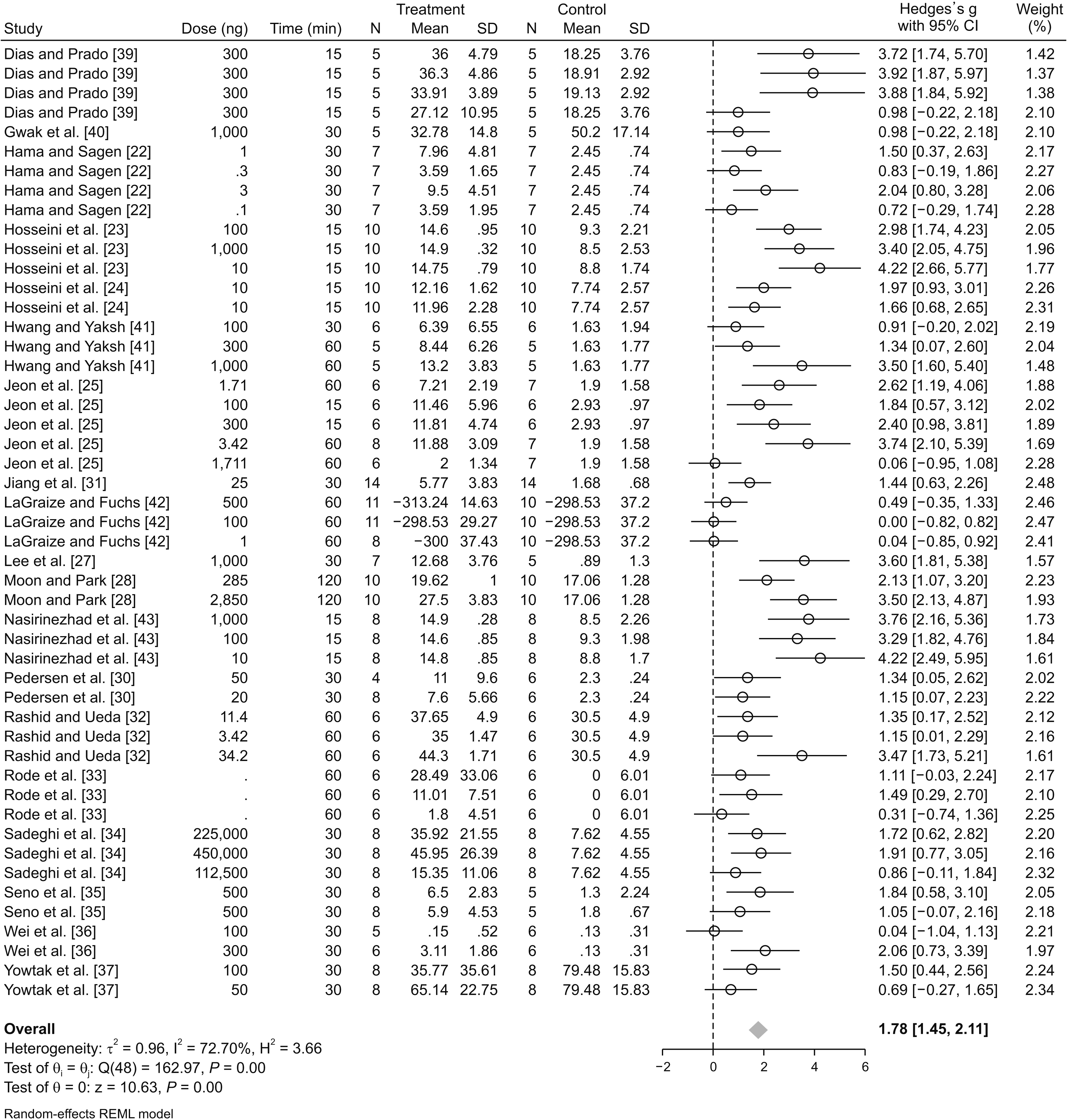
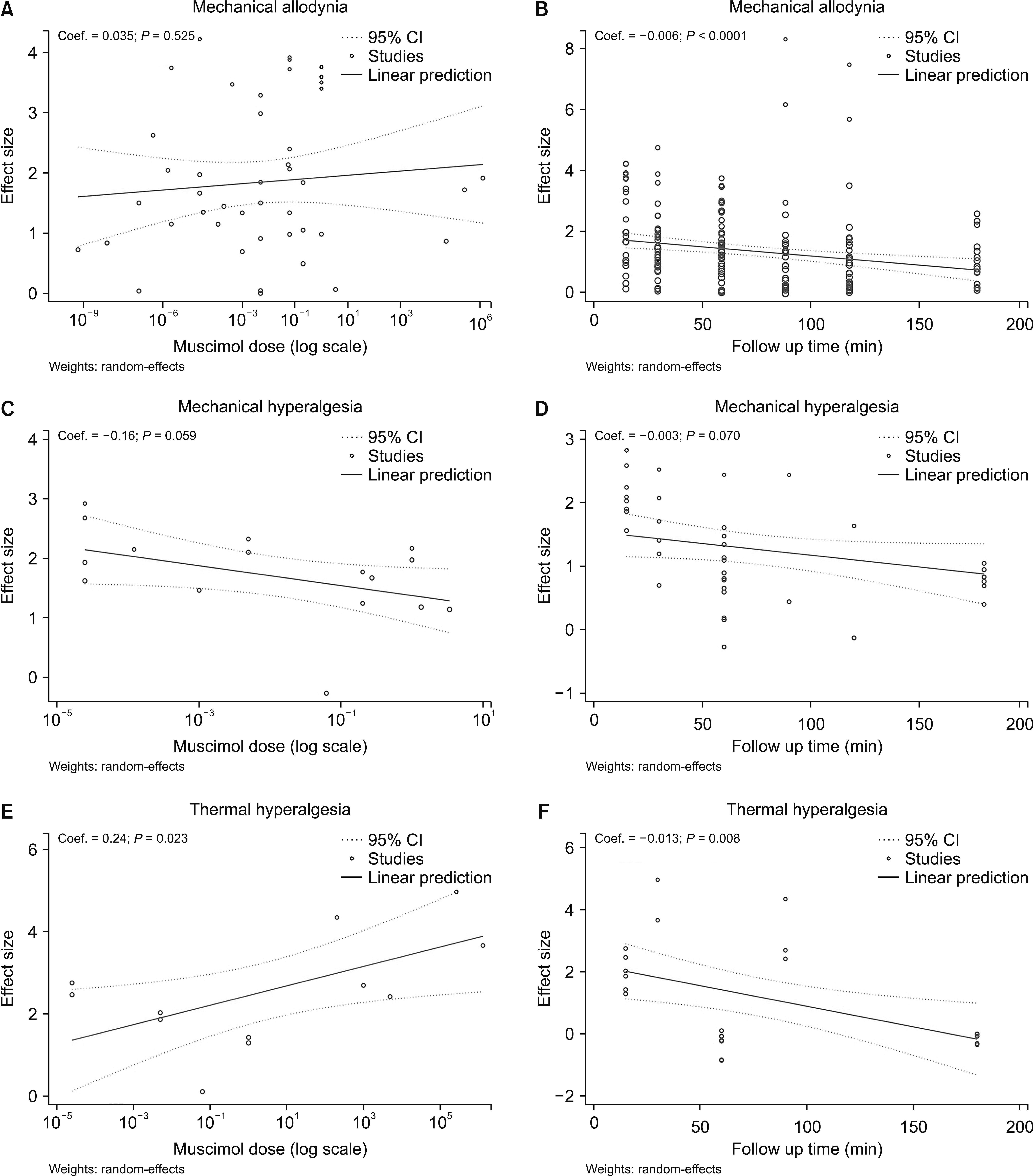
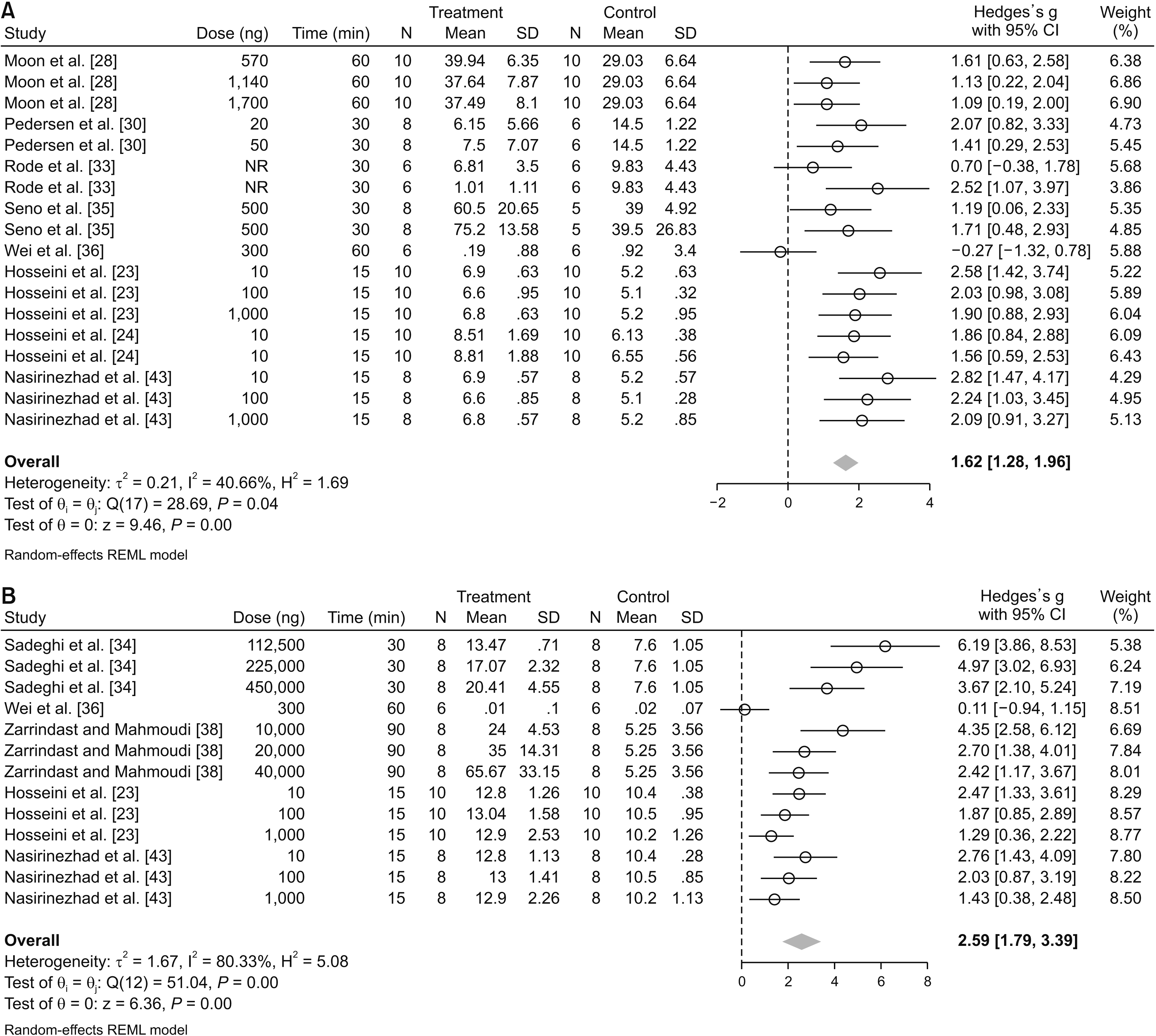




 PDF
PDF Citation
Citation Print
Print



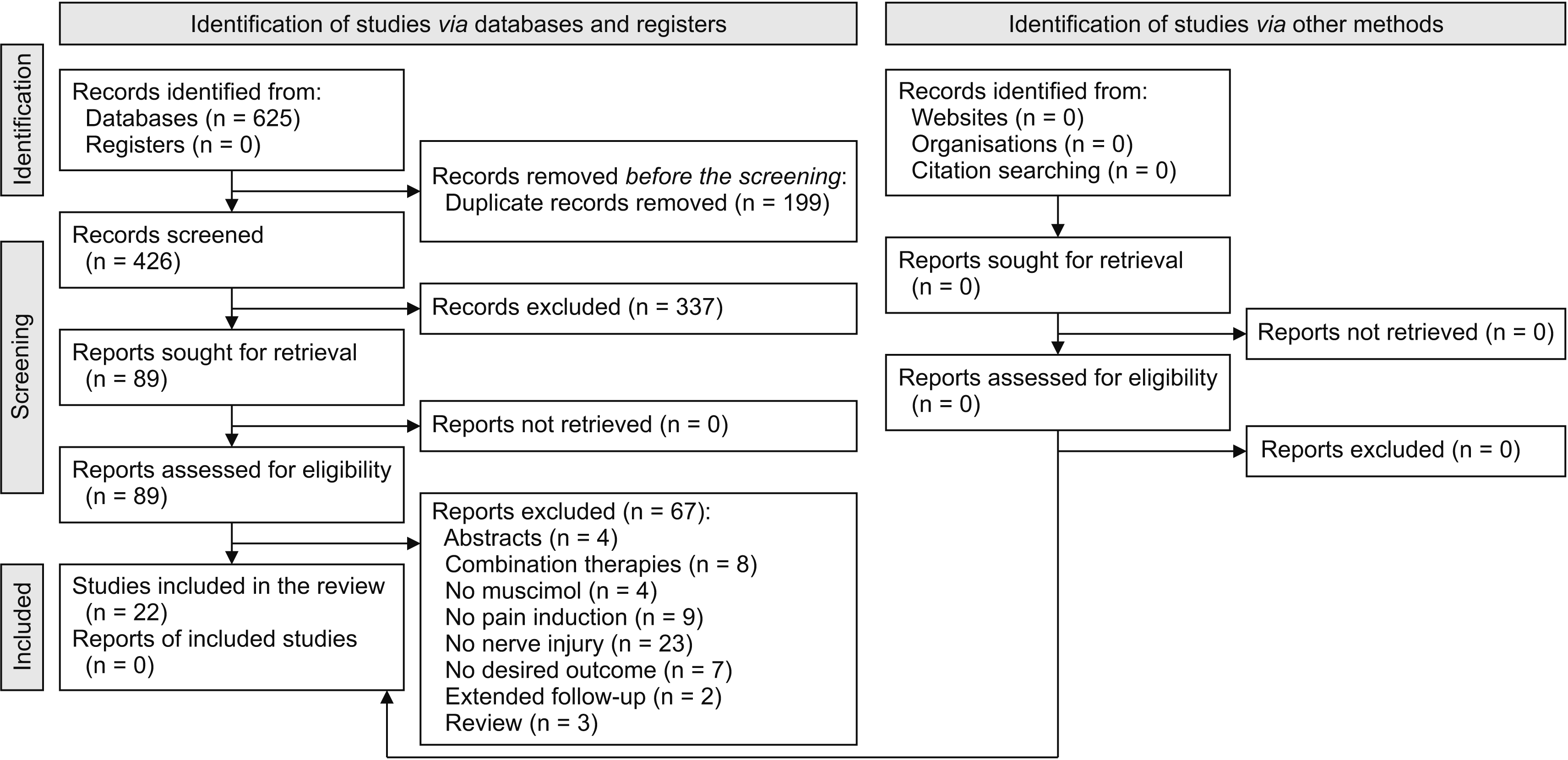
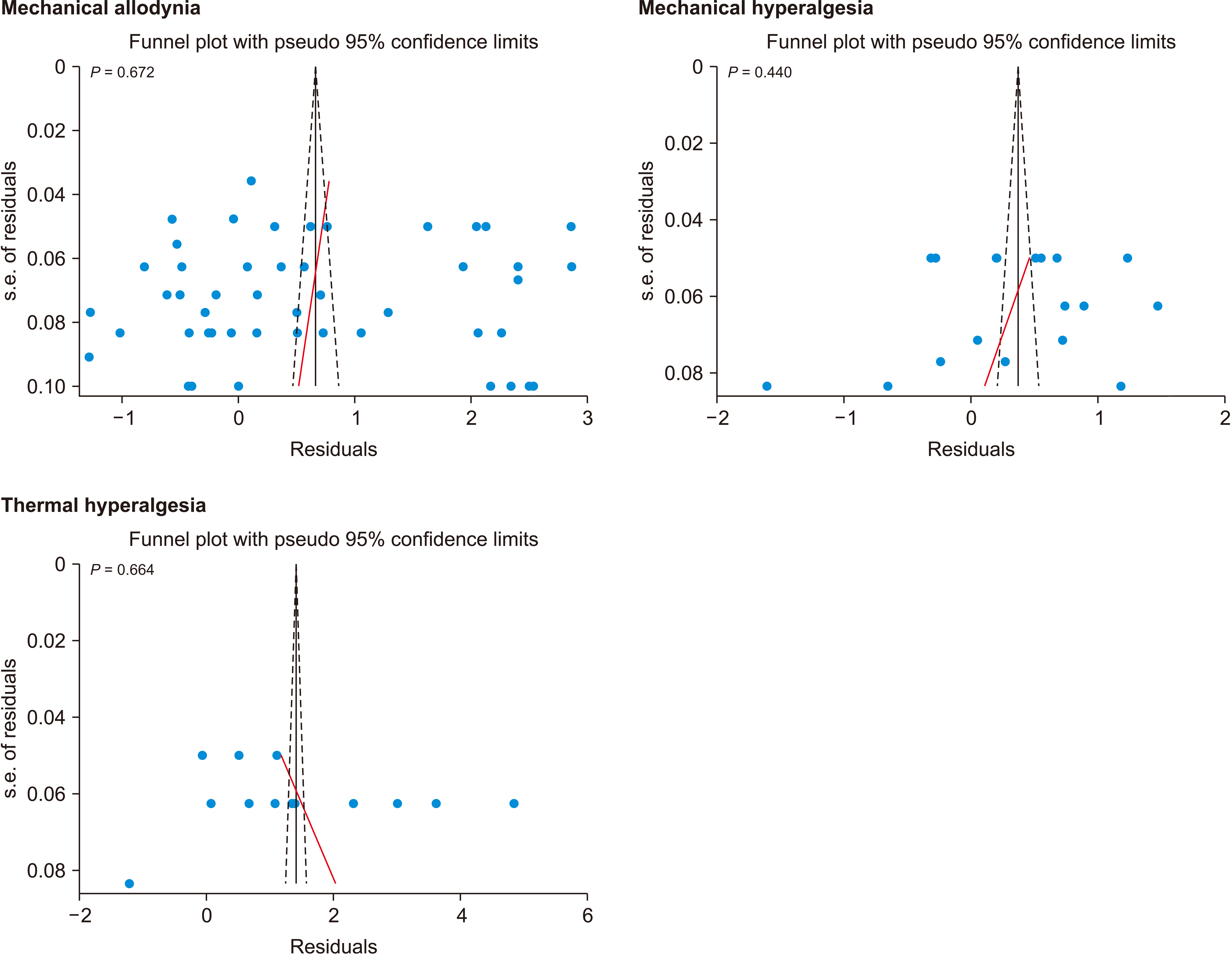
 XML Download
XML Download